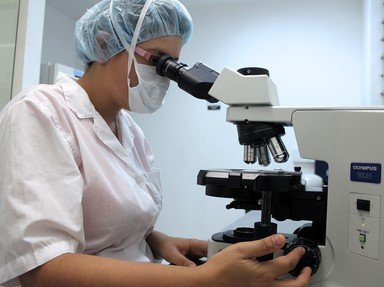Quiz Answer Key and Fun Facts
1. Which of the following do cells directly obtain energy from?
2. All cells undergo cellular respiration all the time.
3. Which molecule is involved in the transport of electrons during the electron transport system?
4. Oxygen in the electron transport system bonds to what molecule to form H20 (water)?
5. Between which bonds in the phosphate groups of ATP can energy be easily released?
6. Each reaction during cellular respiration is catalyzed by a specific enzyme.
7. What is the main function of coenzyme A in respiration?
8. What is the alternate name of oxygen in the electron transport system?
9. In what organelle do both the Krebs cycle and the electron transport system occur?
10. Which situation is accurate for describing when the energy from the hydrogen ions is transferred into ATP molecules?
11. The energy produced by cellular respiration is used to drive biosynthesis.
12. A track athlete has just finished running a two-mile race nonstop for his team. His legs are aching, but he does not know why. Which of the following processes of fermentation can we assume he has undergone?
13. What portion of the mitochondria does the electron transport system occur in?
14. Our cells can directly use the energy supplied by nicotinamide adenosine dinucleotide molecules.
15. Which of the following does an organism not need energy for?
Source: Author
Jayman88
This quiz was reviewed by FunTrivia editor
crisw before going online.
Any errors found in FunTrivia content are routinely corrected through our feedback system.

